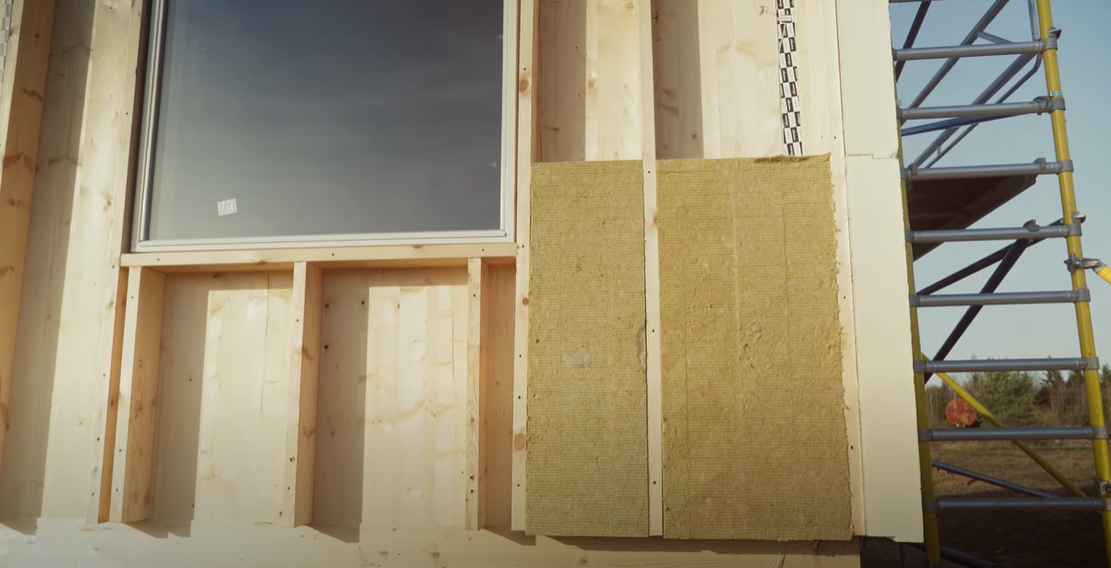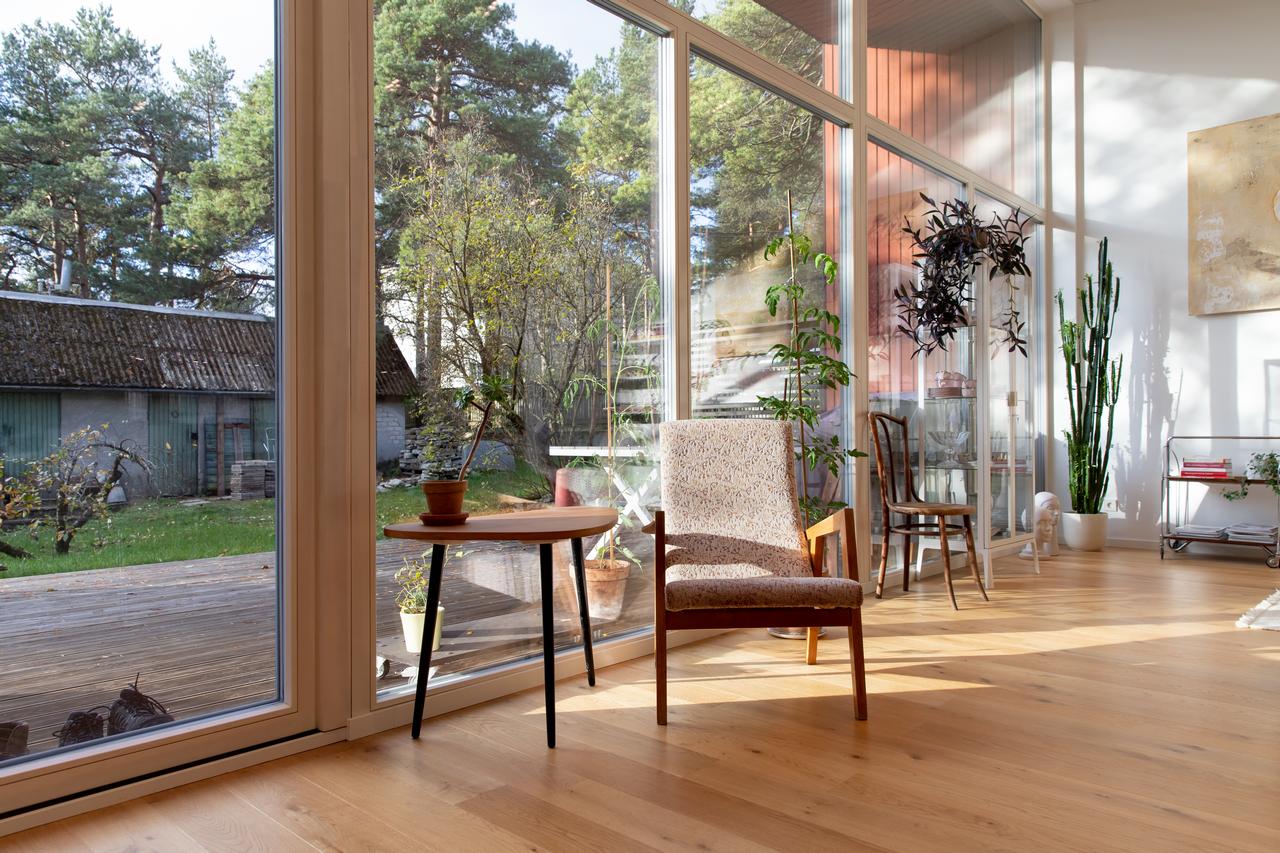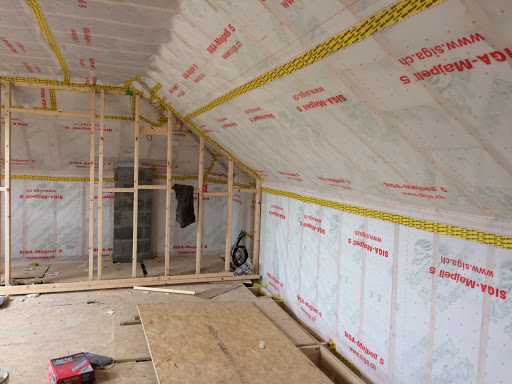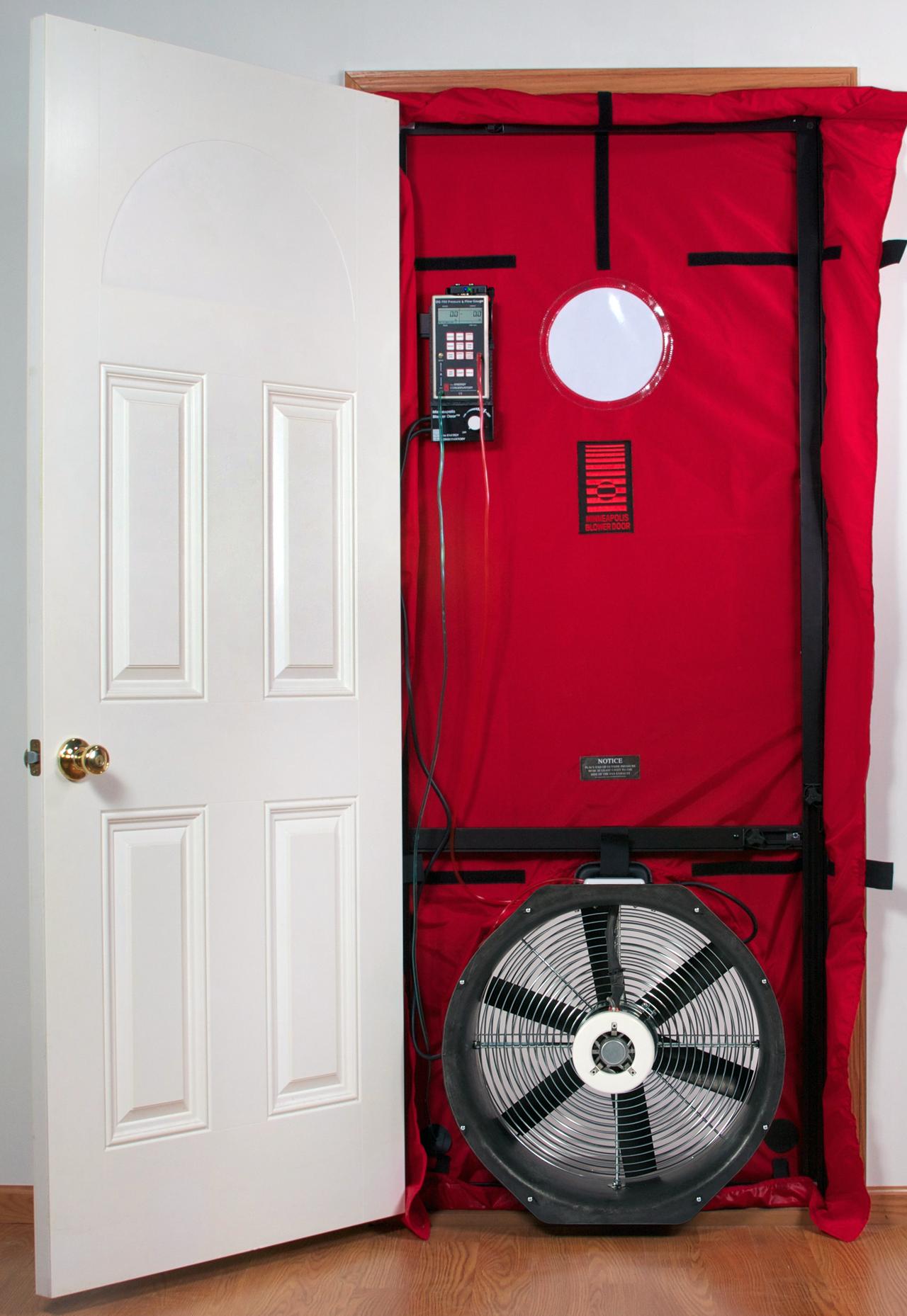Here at Katus, we spent the last 10 years dealing with energy-efficient houses.
When I personally started my journey into the prefab housing world, I had no idea how energy-efficiency could be achieved.
I remember clearly the frustration I felt when I wanted to know more but didn't know where to start from...
Today, when I search on the internet anything about energy-efficiency of a new home, I can find only partial information, information that is often regurgitated from different sources and superficial at best.
I can no longer stand this inefficiency (pun intended) and so I wrote this article that tells you everything you need to know to put your ducks in a row when it comes to the energy-efficiency of your new home...
Why energy efficient?
Most people are after energy-efficient homes just because they want to save money on their monthly heating and cooling bills.
This is a bit like saying "I want to eat vegetables cause it makes me save money"...
I'm sure you can see the obvious side benefits of eating a healthy diet (higher energy levels, better immune response, longer lifespan, ...).
In the same way, building a truly energy-efficient home brings about several desirable side effects.
These "side effects" are the 6 core features of an energy-saving and environmentally friendly house:
- stable indoor climate.
In an energy-efficient house temperature and humidity are constant or slowly moving. - enhanced indoor comfort.
Truly energy-efficient homes are characterized by uniform temperature on the interior surfaces, which leads to a total absence of draughts.
Sidenote: in most standards and norms, the recommended constant temperature for indoors is 20-21°C (68-70°F). - healthy indoor environment.
When an energy-efficient house is built correctly, you'll enjoy the total absence of mold ad toxic volatile compounds. - highly soundproof indoor environment.
As a result of the generous amount of insulation encased in all the components in contact with the exterior environment, energy-efficient houses do an excellent job of keeping the noise of the world outside of the house. - responsible and eco-friendly.
Owning an energy-efficient house sets you apart from the crowd.
Sidenote: some would say you can pride yourself on doing your part to save the planet... I'd point instead your attention on the fact that you can enjoy a kick-ass home while saving the money in your wallet... how cool is that??? :) - ...not to forget the obvious benefit of the lower (or almost zero) monthly expenses for heating and cooling.
So, there you have it, the 6 core features of an energy-efficient home.
Sidenote: you might be thinking that building regulations and norms are already taking care of these aspects and that if something is build to meet the demands of those norms it does the job. Well, it does not.
Norms and regulations set the MINUMUM standards for a building to be accepted as a living environment, but this is way below the bar you would want to set for your own home.
The key factors for energy-efficiency
At this point, you might be wondering what do you need to do to get such marvel of engineering...
Hint: it does not involve selling your soul to the Devil.
There are essentially only 4 factors that determine the energy efficiency of a building.
They are:
- insulation (U/R values)
- natural light, irradiation & solar gains
- thermal bridges
- air-tightness
For southernmost locations, thermal inertia (time-shift) also plays a role in the energy dynamics of the building.
You probably can see already that those factors are intertwined with the fabric of the building... so, if you were wondering how to make a house energy efficient, the answer is:
truly energy-efficient houses are designed and built as such, not patched up to become energy efficient.
Of course, you want to nail all the 6 core features (listed above)... don't you?
So, we need to better understand these 4 (+1) factors and how they come to guarantee the results you are after.
Let's see them one by one...
1. Insulation

There is no way around it.
To keep the heat in the house and the cold outside (or vice-versa) you need to have plenty of insulation in your foundation, walls, roof.
This is really the first step and essential condition to even begin talking about energy-efficiency.
The question that follows immediately is: how much insulation do I need?
Well, that depends on the type of insulation and on the location of the building.
However, for most insulation wools, you need AT LEAST 300mm (11.8 inches).
Sidenote: if you are using polyurethane-based insulation, you can get away with 200mm (7.9 inches).
However, due to cost and health considerations, I'd be very cautious of using polyurethane as primary insulation material for your home.
2. Solar gains
One thing that is often overlooked in the energy balance of a house is the FREE energy we can get from the sun, directly inside the building.

Windows play a major role in the energy balance of your home, in two ways:
- they let a considerable amount of energy out, through the glass and the frame of the window;
- they let a considerable amount of energy, in the form of light.
Now, what most people don't know is that, through careful planning, the energy balance of the windows themselves can be brought close to zero.
This is done with an iterative process that works like this:
- the architect specifies an "attempted" layout for the windows;
- an engineer sets up and runs calculations on the energy balance of the windows, considering:
- their size and physical characteristics (U-value of glass and frames);
- their placement in the wall (it accounts for shadows from the building itself);
- the location of the building (hours of sunlight and inclination of sun rays);
- the energy balance is finalized and changes are made to the size, position, and specs of the windows;
- this process is iterated from point 2.
While this is the correct (and only) way to get the energy balance of the windows right, I would say that less of 1% of homes are actually built using this process.
You see how this process puts an engineer in charge of deciding where the windows should be how big they have to be (not to talk about how they should open and which material they should be built out of).
Sadly, in 99% of cases, the architect is the one who's in charge of everything... without running a single calculation.
Key takeaway: architects should always have a say when it comes to what is allowed by regulations and what is not... but when it comes to energy-efficiency, you are the one who decides how far you are willing to go.
If you are truly concerned about energy-efficiency, you need to team up with a good engineer or consultant and let them lead the project.
3. Air-tightness

In modern homes, air-tightness play a fundamental role in 3 of the 6 core features listed above:
- stable indoor climate:
if the air is leaking out (or in) the building, it is practically impossible to gain control of temperature and humidity. - enhanced indoor comfort:
if you have no control on temperature and humidity, you are going to have an unpredictable indoor climate and random draughts will occur frequently; - healthy indoor environment
the humid air moving freely form the interior of the house to the outside will pass through the insulation and, in winter, it will drop the humidity into the cold insulation material in the form of condensation.
The insulation will get wet and it will start to rot.
Mold will form rapidly and your family will start to breathe it.
This will lead to a wide range of health issues.
Take air-tightness seriously
Reading the three points above you should easily grasp how important it is to get your house as air-tight as possible.
On top of all that, air-tightness is really hard to fix once the house is finished... therefore it needs special attention during planning and during construction.
Air-tightness can be measured (and in most locations MUST be measured, to comply with local regulations).
Measuring air-tightness
The measure is called "blower door test" and it tells how much air the building is leaking.

During the test, the building is put under pressure (negative and positive pressure) of 50 Pascal.
While under pressure, the instrument measures the amount of air that is leaking our (or in).
You must strive to get this number to less than 0.6 per hour.
This means that your house leaks less than 0.6 times its interior volume of air in one hour while being subject to a pressure of 50 Pascal (50 Pa = 50 N/m2).
Sidenote: the threshold of 0.6 units of volume per hour was initially set in the Passivhaus Standard, in Germany.
Slowly a number of building codes are catching up with it and recommending the same level of air-tightness.
Most building codes allow the threshold to be much higher (up to 2.0)... but you really want to do everything possible to keep your house super-tight and have your blower-door test score anything below 0.6.
4. Thermal-bridges
In a nutshell, thermal bridges are localized areas that "suck" energy out of the building.
The fewer you have the better.
Two are the major side effects of thermal bridges:
- an increased energy consumption;
- a possible drop of surface temperature that results in alteration of the indoor climate and, in worse cases, in condensation and mold.
Thermal bridges occur wherever two building components join together.
Classic examples of thermal bridges are:
- where the walls join the foundation;
- where two walls join together;
- where where the walls join the roof;
- where two folds of the roof join together;
- where a balcony joins the wall;
- where a support column or beam joins the structure of the house.
The obvious fix for thermal bridges is to avoid them.
Balconies and support columns or beams are particularly insidious, so you better avoid them entirely in your home.
When it comes to the architecture of the house, the fewer edges, the fewer thermal bridges you'll have to deal with.
Anyway, unless you live in a sphere, you are going to have quite many thermal bridges in your house.
The good news is that wooden constructions are inherently good at dampening the effects of thermal bridges.
If your house has a timber-frame structure (and you don't have balconies) you are going to be reasonably safe when it comes to thermal bridges.
If you opt for other construction technologies or you have balconies and columns... then you need an engineer to do some math for you.
5. Thermal inertia & time-shift
This is an issue only if you live at a latitude where the sun gets really hot in summer.
This is why I counted it as +1 in the list of key factors.
In summer, direct exposure to solar irradiation makes exterior surfaces hot.
Depending on the latitude and shadow conditions of your building, this effect can be very (or not much) pronounced.
Important: if you live in a place where you can comfortably stand in the plain sun for most of the year, this factor does not concern you.
Keep the heat out...
Here is a fact: every material has a different capacity when it comes to transferring heat, not only in the quantity of heat it can transfer but also in the time it takes for that heat to pass through the material.
In general, the denser the material, the more it takes for the heat to go through it.
Composite structures (built out of different materials) such as walls and roofs, exhibit heat-transfer properties that depend on the combination of materials used in the structure.
When the sun heats up an exterior surface to a very high temperature, you want the building component (wall or roof) to be able to keep that heat our for a good amount of time... but not too long.
So, How long exactly?
A practical example
Let's take an example to clarify that.
The critical spots in a house are the fold of the roof facing south and south-west walls.
Sidenote: south-west walls (and windows) tend to overheat because the sun sets at the west and, in the late afternoon, sun rays hit the south-west walls almost perpendicularly, after an entire day of temperature build-up.
Let's say we found out that temperature on the south-west wall reaches its peak at 7 PM, whatever that peak might be.
After that, the temperature will drop since the irradiation will decrease.
We want that temperature to be transferred into the structure of the wall as slow as possible... but fast enough to be entirely transferred before the new peak comes.
This will effectively avoid the effect of two hot days summing up inside the wall.
So, the time-shit shall for sure be less than 24 hours.
Also, we can observe that the same wall will not be fully exposed to the sun again for about 14-15 hours.
The ideal time-shift
Without going into sophisticated models, it suffices to say that the ideal time-shift for all the building components in very hot climates is between 12 and 15 hours.
This time-shift depends on the internal structure of the component and it can be engineered as necessary.
Again, if you live in a place where you can comfortably stand in the plain sun for most of the year, this factor does not concern you at all.
Key components for energy efficiency
When we consider the energy-efficiency of a building, we need to focus on the parts of the structure that separate the indoor environment form the outdoors and from the elements.
This part of the house that serves this function is called "building envelope".
Side note: a good building envelope can keep the indoor climate stable, without the need of providing energy.
This is one of the core concepts of the Passivhaus Standard, developed in Germany starting from the 70s.
The building envelope is composed of several components, namely:
- foundations;
- exterior walls;
- roof;
- windows.
Since each one of these components separates the outside from the inside of the building, the individual energy performance of each one of these components sums up to give the overall energy performance of the building.
In order to optimize the energy-efficiency of the building, one should strive to balance the energy losses between each category of components (it doesn't make much sense to build a hyper-performing roof when the rest of the structure spills out energy like a bucket full of holes).
Ideally, you'd have 25% of energy spilling out for the foundations, 25% out of the walls, 25% out of the roof, and 25% out of the windows.
This can be done (and should be done) iteratively after the architect drafted the preliminary design.
Sidenote: the windows and the foundations are always the most critical components when it comes to energy performance.
The foundation is hard to keep free of thermal bridges while the windows have much higher thermal transmittance (U-value) of the other components.
In other words, energy-efficient windows and bridges-free foundations are expensive.
Key technical systems for energy efficiency
The building envelope serves the important purpose of minimizing energy spill outs.
However, in most cases, it will be necessary to provide additional heating or cooling (or both) in order to keep the indoor temperature at 20-21°C (68-70°F).
Furthermore, in all modern buildings, it is necessary to provide a constant supply of fresh air through mechanical ventilation.
Sidenote: we want our buildings to be air-tight to eliminate the risk of molding and maximize the energy-efficiency... but then we must be able to guarantee change of air inside the rooms in order to have the right amount of oxygen and the right level of humidity.
Heating, cooling, ventilation
In the end, to guarantee 3 of the 6 core features, we have to use some electricity for cooling and ventilation.
We also have to use electricity or some other form of energy (gas, wood, ...) for heating.
We want our systems and appliances to be as energy-efficient as possible so that they can do their job with minimum waste of resources and we can get the best bang for our bucks.
When it comes to heating, unless you have available a cheap source of local wood, the best option is to use a heat pump.
Heat pumps are machines that use electricity to extract energy from the air or from the ground, the energy that is used to heat or cool your home (yes, the same heat pump can make hot and cold).
Heat pumps can provide as much as 3 times of energy for heating/cooling of the electric energy they use.
This makes them extremely efficient.
Domestic Hot Water
If you decide to use a heat pump in your new home, make sure you buy a model that can also provide domestic hot water.
In fact, a lot of energy is spent throughout the year to warm up the water for domestic use... and a good heat-pump can drastically cut down this part of energy consumption.
In the end, you need to invest in:
- a regenerative mechanical ventilation system (HVAC);
- a good heat-pump for heating + cooling + DHW;
- energy-efficient appliances.
Key activities for energy efficiency
The overall energy efficiency of a building is the result of properly dimensioning the 4 factors and adopting technical systems that help to achieve the 6 core features.
These are all "physical" factors and we got them covered in the sections above.
In this section, we are going to examine some of the man-dependent factors that could harm the energy performance of a well-designed building.
These factors are:
- the design itself.
A good project starts with a good design.
All the aspects addressed in the previous sections need to be taken into consideration and the energy balance of the building must be calculated (black on white) before the commencement of the works.
Failing to do so will set you on a very wrong path.
If you want your house to have outstanding energy performance, you must insist to get detailed calculations of the energy balance of the building. Then, you must go through several iterations with the aim to optimize the forecast yearly energy consumption and the cost of the investment (read more on this in the section about the budget). - the know-how and capability of the manufacturer.
You need to contract a manufacturer who understands the building physics and not only provides manufactured house parts.
The manufacturer should be able to propose energy-efficient solutions, especially in regard to the connection between components (to avoid thermal bridges and maximize air-tightness).
Don't assume it is their job to know these things. Ask.
Be specific. Ask for the result of the blower door test on their previous projects.
Did they ever reach the limit of 0.6 h-1? ...if not, why? - the craftsmanship of the workers dealing with the building envelope.
All the workers involved in the construction works should have had proper training about building energy-efficient buildings.
Simple things like installing sealing tapes correctly are essential to the overall result.
Small mistakes can sum up to a big failure (especially when it comes to airtightness and thermal bridges). - the correct installation of all the services of the building.
Technical installation must be drawn up entirely in the design phase.
They should be correctly dimensioned (remember, this house uses much less energy than a regular one).
Their position in the layout of the building should be chosen carefully, taking into account thermal bridges and air-tightness.
Everything should be designed in a way that most of the installations are on the indoor side of the vapor barrier (to maintain a high level of air-tightness).
In the few cases where one pipe crosses the air-tight layer, special sealing tapes must be used to guarantee long-term air-tightness.
The number of these crossings must be kept to a minimum.
Whoever works on the installation of the pipes and cables must be aware of these rules and must take responsibility to follow them. - the project management.
Your project manager is responsible to make sure that:- everything is built according to the approved design;
- everything is built according to the specification and rules set with particular regard to the energy-efficiency of the building;
- works remain on schedule;
- works remain on budget;
- eventual roadblocks are identified and removed before they become critical;
- a process is in place to guarantee traceability and pinpoint responsibilities if the need arises (keep track of who did what and in which order).
If you stick religiously to these guidelines, your house will be top quality and super energy-efficient.
Sidenote: given the many items on this list and the many people involved in construction, you should be able to see how easy it is to screw things up.
For this reason, having good project management (who actually spends time on the construction site) is a key ingredient for a successful project.
Energy efficiency and budget
If you value the content of your wallet as much as you value energy-efficiency, your goal should not be to build a house with zero energy bills.
In fact, while that is definitely feasible, it is generally too expensive.
So what should you do instead?
Look at the future
When the house is ready your family will be able to enjoy a wonderful place, for many many years.
For many many years you'll also be called to pay a mortgage every month, and to pay utility bills.
With this in mind, you really want to minimize the sum of the monthly mortgage rate + monthly utility bills.
That's your winning strategy!
These amounts obey to this general rules:
HIGH construction cost = HIGH monthly mortgage rate + LOW monthly utility bills
LOW construction cost = LOW monthly mortgage rate + HIGH monthly utility bills
As for all things human, you want to stay clear of the extremes.
A good engineer can help you crafting a construction budget and an energy balance with the projected costs of the utility bills.
With this tool, you can solve the riddle above and choose the right level of energy-efficiency for your pockets.
Sidenote: many banks require a downpayment which is proportional to the cost of construction.
Depending on your assets and cash flow, this might be a real bottleneck and might force you to compromise for a less than ideal energy performance.
In other words, the bank might force you to spend less and make your house less energy-efficient.
You should try to negotiate with the bank. leveraging the fact that your monthly bills will be lower if the house is more energy-efficient.
It helps to have the engineer's work backing up your claims.
The budget
A good budget should always include the cost of the supply and the cost of installation for every item that needs to be in the house.
Services can be listed in the "installation cost" column.
With regard to energy-efficiency, you must pay special attention to include all the services and particular items we listed in the sections above.
A few examples are:
- blower door test, twice;
- energy-efficient appliances;
- accurate design of ventilation, heating & DHW systems;
- best-in-class equipment for ventilation, heating & DHW systems (do not over-dimension it!);
- a project manager with good experience and an excellent eye for details;
- ...
Last but not least, keep in mind that energy-efficient components for the building envelope use more insulation and are therefore thicker.
This makes them bulkier and the delivery of the house kit might require more trucks... which translates to a higher cost.
This is not to say that you should make the building components less energy efficient to save money on transport!
On the contrary, if you see that you are doomed anyway to spend 2-4k more on transport, I would urge you to use better performing insulation material (lower lambda) in the construction of the house components.
Using wool insulation with lambda 0.033 W/m2K (instead of the standard 0.037) will allow for a reduction of the thickness of the wall of about 10%, while keeping the same energy performance.
This can make the difference between needing that extra truck or not.
You'll still spend the same money but you'll be building a better building envelope and gain a tiny bit more indoor space.
How to make all this happen?
I know, this is a lot to process... but of course, you don't need to master all those things.
You just need to have a high-level understanding of what's necessary to achieve top energy-efficiency, so you can hire the right people to assist you on your journey (and to make sure you don't screw up the one chance you have to get your home built right).
The key players in this game will be:
- your architect
responsible to make sure that:- the house meets your wants and needs;
- the house looks like you want;
- the architectural design complies with local regulations.
- your engineer(s)
responsible to make sure that:- static & dynamic calculations are correct;
- all the technical details are designed according to your local standards;
- the energy balance is calculated correctly.
- your manufacturer
responsible for:- producing the house;
- shipping the house;
- assembling the house (optional).
- your general contractor (optional, you can have a lot of subcontractors instead).
responsible for:- groundworks;
- foundation works;
- assembly of the house (optional);
- coordinating technical installations (or executing them);
- interior finishes;
- final cleaning;
- handing over the finished house;
- providing a guarantee.
- your consultant (optional)
responsible to make sure that:- the proposed architectural design is suitable for manufacturing;
- the proposed architectural design is energy-efficient;
- you divide correctly the workload between the architect and the manufacturer (so you save money);
- you choose the right manufacturer;
- the U-values of the components are correct (you should not blindly trust what is stated by a manufacturer);
- your implementation plan does not have major holes;
- your budget does not have major holes.
- your project manager
responsible for making sure everything runs as planned (read more in the section above, key activities, point 5).
Conclusion
An energy-efficient home brings about more than just money-saving.
Investing more in the building envelope and into energy-efficiency equipment will elevate the quality of life of your family.
Building a new home is something most of us do only once.
Try to make it count and get it right.
If you need help to get started on the right foot or you just want an expert opinion on your project, you can schedule a consulting call with us.





